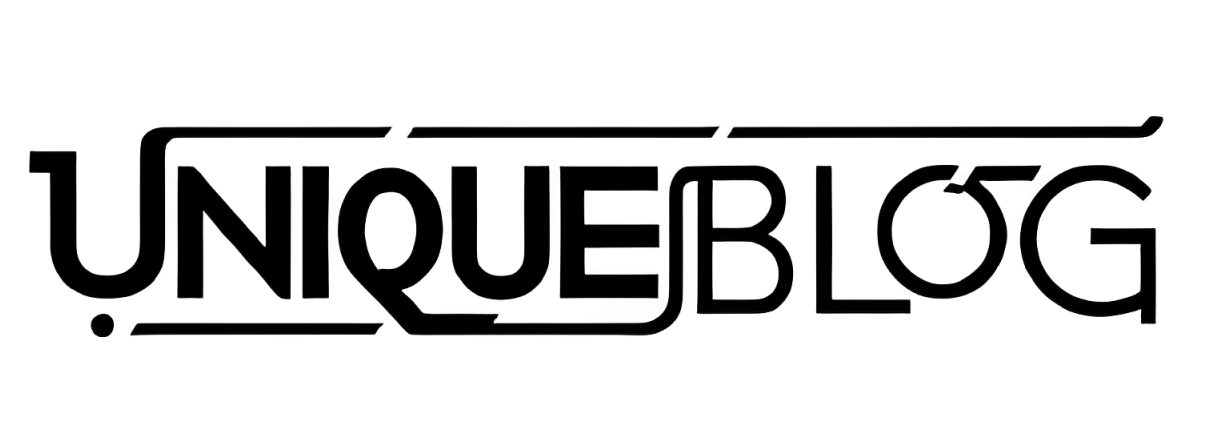When people first see the word conalingous, they often feel confused because it does not appear in standard dictionaries. However, curiosity around such terms is very common, especially when unusual words show up online, in forums, or in everyday conversations. The important thing to understand is that language is constantly changing, and new words, spellings, or expressions often enter discussions without having official definitions. Therefore, exploring conalingous gives us an opportunity to look at how words gain attention, how people use them in different ways, and why they matter in communication. By breaking it down carefully, we can make sense of its possible meaning, context, and usage while still keeping explanations easy to read and understand.
The Possible Origins of Conalingous
The word conalingous does not have a clearly recorded origin, but that does not mean it is meaningless. Many words start as misspellings, creative forms, or even playful variations of other terms before they gain attention. Some people may connect it to words like “analogous,” which refers to things being similar, or “congruous,” which means fitting together or matching. Others may see a link with terms related to intimacy or expressions found in informal speech. Even if the true origin is uncertain, looking at related words gives us hints. It shows how people often shape language based on sound, appearance, or association. That way, conalingous can be better understood as a word shaped by human creativity, not as something random.
Conalingous in Language and Expression
Language is not fixed; it grows with human imagination. The word conalingous may not exist in textbooks, but it can still serve a purpose in communication. For instance, some may use it as a descriptive word to show comparison, much like how “analogous” is used in English. Others may see it as a playful or slang-like creation used online. In both cases, its function depends on how people interpret it. That is why studying words like conalingous is helpful, since it reminds us that meaning is not always tied to official rules but often built through context. Even unfamiliar words can express feelings, ideas, or creativity when used thoughtfully in speech or writing.
How People May Use Conalingous Online
In online spaces, new words appear all the time. Conalingous is a good example because it seems unusual, yet it sparks curiosity. On social media platforms, people often invent or adopt strange words for humor, memes, or creative writing. Sometimes they appear in usernames, hashtags, or casual posts. These uses do not require formal dictionary approval; instead, they rely on the audience’s ability to understand through repetition and context. This is how slang spreads quickly across communities. Therefore, if someone uses conalingous in a comment or discussion, the meaning may shift depending on the group. Some might see it as a funny term, others may treat it seriously, while many will simply ask what it means.

Why Words Like Conalingous Gain Attention
The reason conalingous attracts attention is that humans naturally want to understand things that are unfamiliar. A strange-looking word makes us pause and wonder about its origin, meaning, and purpose. This curiosity is powerful because it keeps language evolving. Additionally, unusual words spread faster online since people share them in jokes, challenges, or even blog posts. The unique sound of conalingous may also make it memorable, which encourages further use. In short, people notice such words not because of their dictionary meaning but because they stand out in everyday communication. That process alone helps keep languages alive, creative, and always changing in ways that reflect human imagination.
Conalingous Compared With Similar Words
Even if conalingous is not officially defined, we can compare it to similar terms for clarity. One possible comparison is with “analogous,” meaning alike or similar in some way. Another is “congruous,” which refers to harmony or things fitting well together. Both have structural similarities to conalingous, which may explain why people find it familiar despite being uncertain. Additionally, some might mistakenly link it with intimate terms due to its spelling, but context matters most. By making comparisons, we can reduce confusion and see how conalingous could logically fit into sentences. Words often get understood by association, and this one seems to work the same way.
The Flexibility of Words Like Conalingous
One of the best things about words such as conalingous is their flexibility. Because they are not fixed by grammar books or dictionaries, they can take on multiple roles. Some might use it as an adjective, while others could treat it as a noun. It could even appear as part of creative writing or digital slang. This flexibility makes it easy to adapt across contexts. For example, a writer might describe two ideas as “conalingous” to show similarity, while another person might invent a new, humorous meaning. Such adaptability is what allows new terms to survive and spread, even when their origins remain unclear. In a way, conalingous is a word in progress.
The Curiosity Around Unusual Words
Whenever a word like conalingous appears, it sparks curiosity among people who love language or simply enjoy discovering new terms. This curiosity often leads to research, debates, or creative use. People may ask questions, search online, or even try to give the word their own definition. Curiosity acts as fuel for keeping unusual words alive, even if only in small communities. Importantly, this process highlights how people shape meaning together, rather than waiting for official approval. In this way, conalingous becomes more than just a strange word—it becomes an example of how humans play with language to express themselves in unique ways.

Conalingous in Modern Communication
In modern communication, new words like conalingous are not just extras—they often become part of how groups identify themselves. Online forums, gaming communities, or social circles sometimes adopt such words to create a sense of belonging. A shared understanding of conalingous, even if vague, makes people feel connected. That is why communities develop inside jokes or special vocabulary that outsiders may not understand. This trend shows how communication evolves based not on rules but on use and shared meaning. Conalingous might not appear in grammar lessons, yet it still holds value because it represents the creativity of group expression.
Cultural Impact of Strange Words
Words like conalingous may seem unimportant at first, but they actually have cultural impact. They remind us that language is not only a tool for communication but also a reflection of creativity, humor, and identity. When people create or adopt unusual words, they bring culture to life in unexpected ways. These words often appear in music, memes, art, or online movements, shaping how people interact. The cultural impact does not require official recognition; instead, it grows naturally from use. Conalingous, therefore, is not just a mysterious term—it also represents how culture and communication are constantly linked, even in small and playful ways.
Why People Search for Conalingous
Search engines show that people often look up strange or rare words. Conalingous is one of those keywords that drives curiosity. People want to know what it means, how to use it, or where it came from. Even if they do not find a direct answer, the search itself shows that the word has power. It sparks discussions, generates blog posts, and even inspires creative definitions. In many ways, the search for conalingous highlights human curiosity about language. Every time someone looks it up, they contribute to the word’s life online, making it part of digital culture even without dictionary approval.
Conalingous and the Evolution of Language
Language constantly evolves, and conalingous proves this process. At one point, many common English words were considered strange or unrecognized. Over time, repeated use gave them meaning and acceptance. Today’s unusual words may follow the same path. Conalingous could remain a playful slang term, or it could gain a clearer definition in the future. The key is that language belongs to the people who use it, not just to books or grammar experts. This evolution shows how every speaker helps shape the vocabulary of tomorrow. Conalingous may be unusual today, but it represents the living, changing nature of communication.
Common Misunderstandings About Conalingous
Because conalingous is unfamiliar, misunderstandings are common. Some people may assume it is a scientific term, while others may confuse it with intimate or medical vocabulary. Still others may think it is a misspelling of existing words. These misunderstandings show why context is important. A word on its own does not always carry meaning; it depends on how people use it. This is why readers should be careful before jumping to conclusions about unusual words. Conalingous may not have an official meaning, but that does not make it meaningless. Instead, it represents how human interpretation shapes understanding.

The Future of Words Like Conalingous
The future of conalingous depends on how people continue to use it. If the word keeps appearing in online posts, blogs, or casual conversations, it might develop a stable meaning. On the other hand, it could fade into obscurity if interest drops. This is the life cycle of many unusual words. Some survive, while others disappear. What matters most is how communities choose to adopt and adapt them. In this sense, the future of conalingous is open, flexible, and dependent on creativity. Its survival will be decided not by rules but by the people who keep it alive through use.
Everyday Examples of Usage
Even though conalingous does not have one official definition, we can imagine how people might use it in daily life. For example, a student could describe two ideas as conalingous if they are similar. A writer might use it in a story to create a unique tone. Online, it might appear in jokes, usernames, or hashtags. These examples show that words do not need approval to have meaning. They gain life from people who find them useful or entertaining. Conalingous works the same way, fitting into different conversations as long as the context helps readers or listeners understand its purpose.
How Conalingous Fits in Creative Writing
Creative writing often welcomes unusual words like conalingous because they add flavor and originality. Writers may use it to make dialogue sound playful or to create a character with a unique way of speaking. Poets might include it for rhythm or wordplay. Even bloggers can use it to spark curiosity, as it draws readers in by being strange and unfamiliar. This flexibility is why many writers enjoy experimenting with unusual words. Conalingous gives them a tool to surprise readers and create memorable moments. Even if its meaning is unclear, its sound and uniqueness can make writing stand out.
Digital Culture and Conalingous
Digital culture thrives on novelty, and words like conalingous fit right in. Online communities love experimenting with language, turning strange words into inside jokes or symbols of belonging. A word does not need a dictionary definition to matter; it only needs to be shared, repeated, and recognized within a group. Conalingous could easily serve that role, whether in gaming chats, memes, or online usernames. In fact, its unusual spelling makes it perfect for digital identity because it stands out. That is how many internet-born words rise to popularity—by being different enough to capture attention while still easy to remember.
Lessons From the Word Conalingous
The study of conalingous teaches an important lesson about language: meaning is created by use, not by rules. Even if a word starts as strange or unclear, people can give it meaning through communication. This lesson applies to slang, creative writing, and cultural exchange. It reminds us that words are tools we adapt, not static symbols fixed forever. Conalingous may not appear in dictionaries, but its presence online shows how powerful human creativity is in shaping language. By paying attention to such words, we gain insight into how language evolves and how communities bring new expressions to life.
Conclusion
In the end, conalingous may not have one fixed meaning, but it carries value because it sparks curiosity, creativity, and discussion. Its role in language shows how humans shape meaning through use, not only through rules. Whether it remains a playful term or grows into something bigger, conalingous represents the living nature of language.
FAQs About Conalingous
Q1: What does conalingous mean?
Conalingus is not found in standard dictionaries, but people use it as a creative or unusual term. Its meaning depends on context, often related to comparison or creativity.
Q2: Is conalingous a real word?
It is not officially recognized, but it is used online and in casual conversations, which makes it “real” in practice.
Q3: Where is conalingous used most?
It mostly appears online—in usernames, posts, discussions, or blogs where unusual words grab attention.
Q4: Is conalingous the same as analogous?
They are different words, but people sometimes compare them because they look and sound similar.
Q5: Will conalingous ever be added to dictionaries?
That depends on future use. If enough people adopt it with a clear meaning, it could eventually appear in formal references.
Read also: Clongarelli Meaning, Origin, and Cultural Significance





